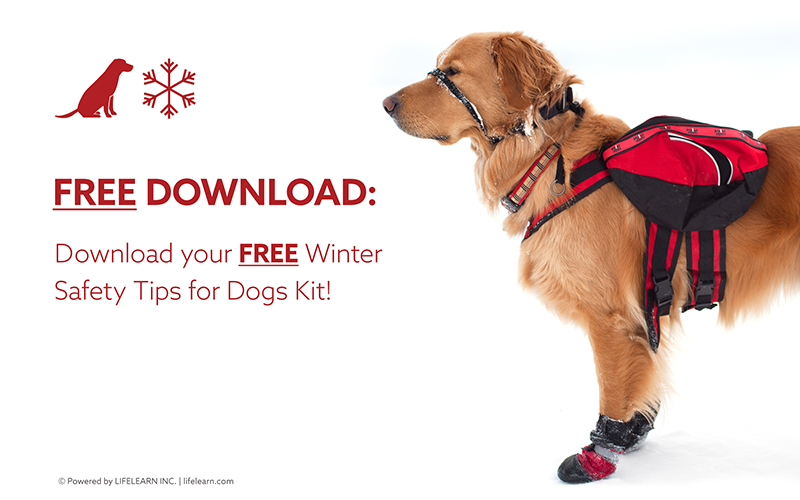Despite warmer-than-normal winter temperatures this season, winter is still coming, with periods of snow and cold temperatures predicted across North America by the National Weather Service and Environment Canada. Here are three tips for dog owners to help keep their pets winter-safe:
1. Chemical Deicers Can Be Toxic
While more people are using pet-friendly deicers in winter, dangerous chemical deicers remain widely used on sidewalks and streets, and have varying degrees of toxicity for dogs, depending on the ingredients and amounts ingested.
Chemical deicers containing the antifreeze material ethylene glycol are a deadly poison for dogs. As a standard deicing agent found in antifreeze and winter windshield washer fluid, ethylene glycol has a sweet taste that many dogs find irresistible—and it only takes a small amount to cause permanent and fatal damage to their kidneys.
After any exposure to chemical deicers, wipe off your dog’s feet with a damp towel. When using chemical deicers, read the labels of products carefully and follow all recommended precautions.
2. Protect Against Frostbite
Paws, ears, and tails, like human hands and faces, are susceptible to frostbite. To help protect dog paws, boots in a wide variety of styles are easily found online and in pet stores. In addition to helping tender paws stay dry, dog boots often come with soles, which also provide added traction in icy conditions.
If your dog doesn’t enjoy wearing boots (or needs time to get used to them), remove caked ice and snow from your dog’s feet as soon as possible. Also, keep your dog’s nails trimmed. Long nails force a dog’s paw to splay out, which increases the odds of snow and ice accumulating between paw pads.
Frostbitten skin may appear reddish, gray, bluish, or white in color. If you suspect your dog has frostbite, seek immediate veterinary care.
3. Wind Chill Can Be Deadly
While some breeds are built better than others to withstand cold temperatures, prolonged exposure for dogs to wind chill and cold temperatures can cause fatality from hypothermia. Dog jackets can help dogs stay warmer for longer in winter weather, but don’t wait until your dog starts shivering before realizing it’s time to head back indoors.
If your dog must live outdoors, an insulated doghouse is a must. A doghouse should be elevated a few inches from the ground to prevent moisture from accumulating inside. Carpeting, a blanket or a padded bed should cover the floor. A doghouse should be big enough for a dog to stand up, turn around and lie down comfortably, but small enough to contain body heat. The doorway should face away from the prevailing winds, with burlap or canvas hung over the opening to act as a door.
We’ve also included a printable poster for your clinic or office, an educational handout that you can print or email to clients, and two social media images that you can post on Facebook to further education around the importance of pet winter safety.
Download Your Complimentary Kit
Have a warm and pet-safe winter!






